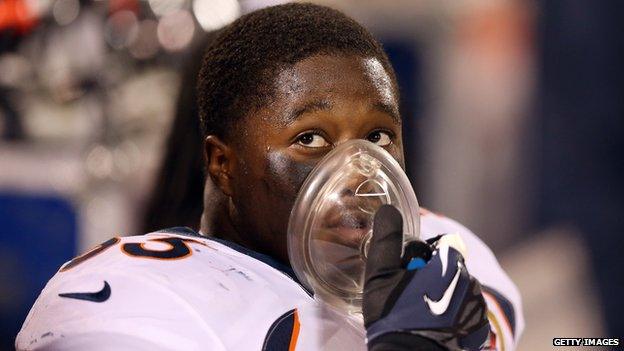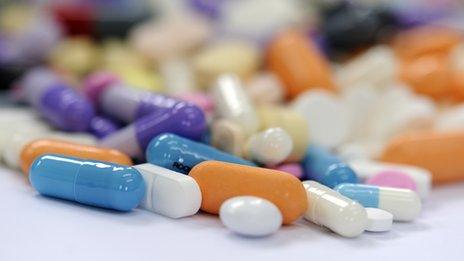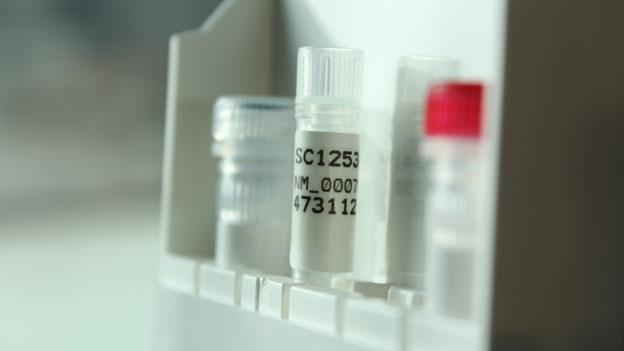Wada brings in ban on xenon and argon, but has no test
- Published

Athletes in many sports use oxygen legitimately, as in this case, but adding xenon to the mix is now banned
Doping experts have yet to find an effective test for athletes using xenon and argon, despite introducing a ban on the gases' use by sports stars.
The new ban has been ordered by the World Anti-Doping Agency, external (Wada), which runs drug testing across many sports.
It follows concerns that athletes were breathing these so-called noble gases to encourage the growth of red blood cells that boost stamina.
But despite being piloted, a valid test is not yet ready, the agency says.
Ignoble prize
The idea of doping with gases more usually associated with arc welding, neon light bulbs and anaesthesia may seem bizarre, but Wada believes there is enough evidence of their enhancement potential to ban them.
Media reports earlier this year, external indicated that athletes in Russia have been using the gases for years as a means of boosting their stamina ahead of international competitions.
Indeed the company that developed techniques to help athletes prepare using xenon, has a "badge of honour, external" on its website from the Russian Olympic Committee for "the organisation and conduct of inhalation remediation".
Earlier this year Wada's executive committee decided to ban these two named gases by adding them to the prohibited list from this month.
"We had serious information that xenon was being used," Wada's science director Dr Olivier Rabin told BBC News.
"We believe it has been used in the preparation for some major events."
Now that xenon and argon are banned, the agency needs to have an effective test for the gases.

Xenon has reportedly been used for a decade in Russia to prepare athletes for competitions
Developing one is not an easy task.
As well as being present in the air we all breathe, albeit in minute quantities, xenon is also used in many countries as an anaesthetic.
Dr Rabin says that Wada scientists are close to developing a direct test for the gas.
"We had some preliminary pilot results that do indicate that detection is not too much of an issue but we just need to make it solid and robust in the anti-doping context and make sure that any result in the future will be accepted by a court."
Validating a test like this to the level that it can stand up in the Court of Arbitration for sport, external is not easy. When I asked Dr Rabin if the test would be in place by the end of the year, he was unable to give that reassurance.
"I cannot give you a specific date, we usually do not, what I can tell you is that the science is very solid and certainly we will do our best, now that the gases are on the prohibited lists to make sure there are detection methods available as soon as possible."
Other researchers though are not convinced that a reliable test will be quickly forthcoming.
They also question why Wada has banned the use of these gases but allows athletes to use oxygen tents or hypoxic chambers that mimic the effects of sleeping at altitude with the aim of producing a similar blood boosting effect as xenon.
"Their whole argument is based on false grounds," said Dr Ben Koh, a former athlete and an expert on sports medicine.
"What is happening among elite athletes is a very artificial process, involving hypoxic chambers before competitions. This is artificial, and it is no different from the artificiality of xenon."
Secondary benefits
Wada says that there could be dangers to the health of the athletes if they use large amounts of xenon or argon and this another reason for the ban, as well as the performance enhancement.
Dr Koh rejects this argument.
"I would argue that xenon is actually safer than hypoxic tents, in terms of heart failure, trauma to the ear and to the lungs, the risks are very well documented from hypoxic tents, on the other hand, xenon gas from the published literature seems to be quite safe."
There is a possibility that Wada has information that xenon can have other sports enhancing effects in athletes that go beyond an increase in stamina.
"The concern would be that there's some secondary benefit not due to HIF1, and that seems to me entirely possible," said Dr Chris Cooper, from the University of Essex, who has researched the science of doping.
"I'm surprised if the effect in these animal models is due to increased hematocrit, there is something else going on."
Wada say they have named xenon and argon for the sake of legal clarity.
I asked Dr Rabin what would happen if similar inert gases such as krypton, say, are shown to have a similar effect.
"Xenon and argon are only examples, it is not a closed list as we do have for narcotics - tomorrow any gas that has a HIF1 activation is de facto prohibited."
So no krypton-powered super athletes then?
"Absolutely not!"
Follow Matt on Twitter @mattmcgrathbbc, external.
- Published19 March 2014

- Published15 January 2014

- Published12 January 2014
